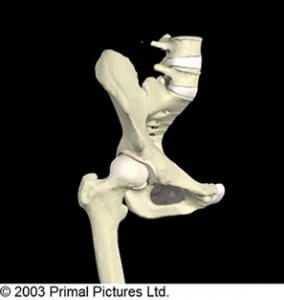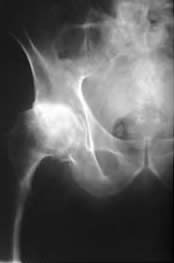HIP OSTEOARTHRITIS
The hip joint is a weight bearing ball-and-socket synovial joint which is commonly affected by wear-and-tear (osteoarthritis).

In early stages of this degenerative process (irrespective of the cause), a sequence of events takes place within the cartilage of the joint, ultimately leading to exposure of some of the underlying bone. The resultant cartilaginous debris causes irritation within the joint and bone spurs (osteophytes) gradually form.

SYMPTOMS
• Gradual onset of pain, which is often described as intermittent mild to moderate aching, which is felt in the hip and/or groin.
• Stiffness which is commonly worse in the morning and after rest, but improves with activity.
• As injury progresses, pain is felt with weight-bearing and relieved with rest.
• Cold/humid weather is often felt to aggravate symptoms.
• In severe cases, patients often walk with the hip rotated outwards (laterally) and may also complain of low back pain due to excessive low back extension to compensate for a loss of extension range of motion at the hip joint.
A suspected diagnosis of hip osteoarthritis can be confirmed via x-ray.

TREATMENT FOR OSTEOARTHRITIS OF THE HIP
At the Bodymotion, treatment for osteoarthritis will initially involve some gentle mobilisation and manipulation of the hip joint and, where necessary, the low back and pelvis to help alleviate the stress through the ball-and-socket joint.
Soft tissue work will also be carried out to reduce the referred pain from the tightened hip muscles and also to improve flexibility and posture. Exercises and advice will also be given to aid in pain relief, to help improve posture and to restore the mechanics to the lower limb. In some instances, dietary advice may also be given.
Unfortunately, conservative treatment is unable to eradicate osteoarthritis. However, by improving the mobility of the hip and furthering understanding of this condition, it is very possible to manage this complaint when it is of mild to moderate severity. Furthermore, by improving joint function, relieving muscle stiffness and improving posture, chiropractic may reduce the rate of further degenerative changes.
In more severe cases, referral to an orthopaedic consultant would be warranted.
(The list of conditions given above and subsequent explanations are intended as a general guide and should not be considered a replacement for a full medical examination. Furthermore, we do not purport to treat all the conditions listed. Should you wish to discuss any of these conditions with our chiropractors, please do not hesitate to phone the clinic on 020 7374 2272 or email enquiries@body-motion.co.uk).
Our team of chiropractors and massage therapists are on hand to answer any questions you may have, so get in touch today via enquiries@body-motion.co.uk or on +44 (0)20 7374 2272.
